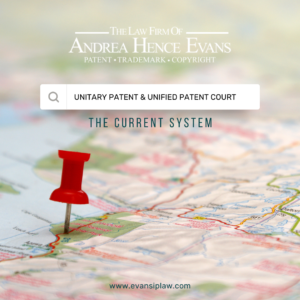Unitary Patent & Unified Patent Court – The Current System
The Unitary Patent and Unified Patent Court (UPC) are significant developments in European Union (EU) patent law, aimed at streamlining and simplifying the process for obtaining and enforcing patents across EU member states. The system was designed to enhance patent protection efficiency, reduce costs, and create a more unified approach to intellectual property (IP) enforcement within the EU.
Here’s a breakdown of the current system:
1. Unitary Patent (UP)
The Unitary Patent is a new type of patent that offers EU-wide protection under a single, unified system. The UP allows patent holders to have a single patent that is valid across all participating EU member states, eliminating the need to validate the patent in each individual country after it is granted by the European Patent Office (EPO).
Key Features of the Unitary Patent:
- Single Patent for the EU: Once granted by the EPO, the patent can be opted into the Unitary Patent system, providing unitary protection in the participating EU countries.
- No National Validation: Applicants no longer need to validate their European patent in individual EU countries, saving time and administrative costs.
- Fee Structure: The cost of maintaining a Unitary Patent is lower than validating a European patent in multiple countries, although there are still annual renewal fees that must be paid to maintain the patent across the participating states.
- Participating Countries: Initially, 17 EU countries are participating, with more expected to join in the future. These countries include major EU markets like Germany, France, the Netherlands, and Italy.
- Automatic Grant: Once granted by the EPO, the Unitary Patent is automatically effective in all participating states without the need for additional filings or translations.
2. Unified Patent Court (UPC)
The Unified Patent Court is a new international court system that aims to centralize patent litigation within the EU. It will have exclusive jurisdiction over disputes related to Unitary Patents and European Patents (for which the patentee has opted into the UPC system), and will handle issues such as infringement and validity.
Key Features of the Unified Patent Court:
- Exclusive Jurisdiction: The UPC will have exclusive jurisdiction over infringement and validity cases concerning Unitary Patents and European Patents (if the holder chooses to submit the patent to the court’s jurisdiction).
- Centralized Litigation: Instead of filing multiple lawsuits in different national courts, patent holders can resolve their cases in a single, centralized forum. This will simplify the litigation process and reduce costs.
- Divisional Structure: The UPC will be structured with a Central Division for handling technical and legal issues related to the validity of patents, and local/regional divisions for infringement cases.
- Speed and Efficiency: One of the main goals of the UPC is to streamline patent litigation, with faster resolution times compared to national courts. The idea is to create a more predictable, efficient system for patent enforcement across Europe.
- Appeals: The Court of Appeal in Luxembourg will handle appeals, ensuring consistency across jurisdictions.
3. Benefits of the Unitary Patent and Unified Patent Court
- Cost Savings: The Unitary Patent reduces the need for multiple filings, translations, and validations in individual EU countries, lowering administrative and renewal fees.
- Simplified Enforcement: The UPC provides a centralized forum for patent disputes, eliminating the complexity of pursuing multiple parallel proceedings in different countries.
- Market Access: The system provides patent holders with the ability to enforce their patents in all participating EU countries with a single judgment.
- Predictability: The UPC aims to create greater legal certainty in patent disputes, offering more consistent decisions across Europe.
4. Challenges and Concerns
- Opting-Out Complexity: While Unitary Patents are automatically subject to the UPC, European Patents holders can choose to “opt out” of the UPC jurisdiction if they want to continue litigating in national courts. The decision to opt in or out may create uncertainties or complexities for patent holders.
- Jurisdictional Issues: Some countries, such as Spain and Poland, have chosen not to participate in the Unitary Patent and UPC systems, which may limit the system’s effectiveness in covering all European markets.
- Transition from National Systems: For businesses with existing European Patents, there will be a transition period during which they must decide whether to switch to the Unitary Patent system or continue using the traditional European Patent system.
- Litigation Risks: A single ruling from the UPC could affect all participating countries, making it critical for patent holders to consider the risks of a single court decision impacting their entire portfolio.
5. The Future of the System
- Expansion: As more EU member states join, the Unitary Patent system will become even more attractive, especially in Europe’s larger markets. However, countries that are not part of the system (such as Spain, Croatia, and Poland) will still require traditional European Patent validation.
- More Legal Precedents: As the UPC begins to handle more cases, the system will likely develop its own body of precedents, which could further influence patent law in the EU.
- Challenges to the System: Legal challenges or decisions from the European Court of Justice (ECJ) may affect the long-term stability or scope of the Unitary Patent and UPC system.

